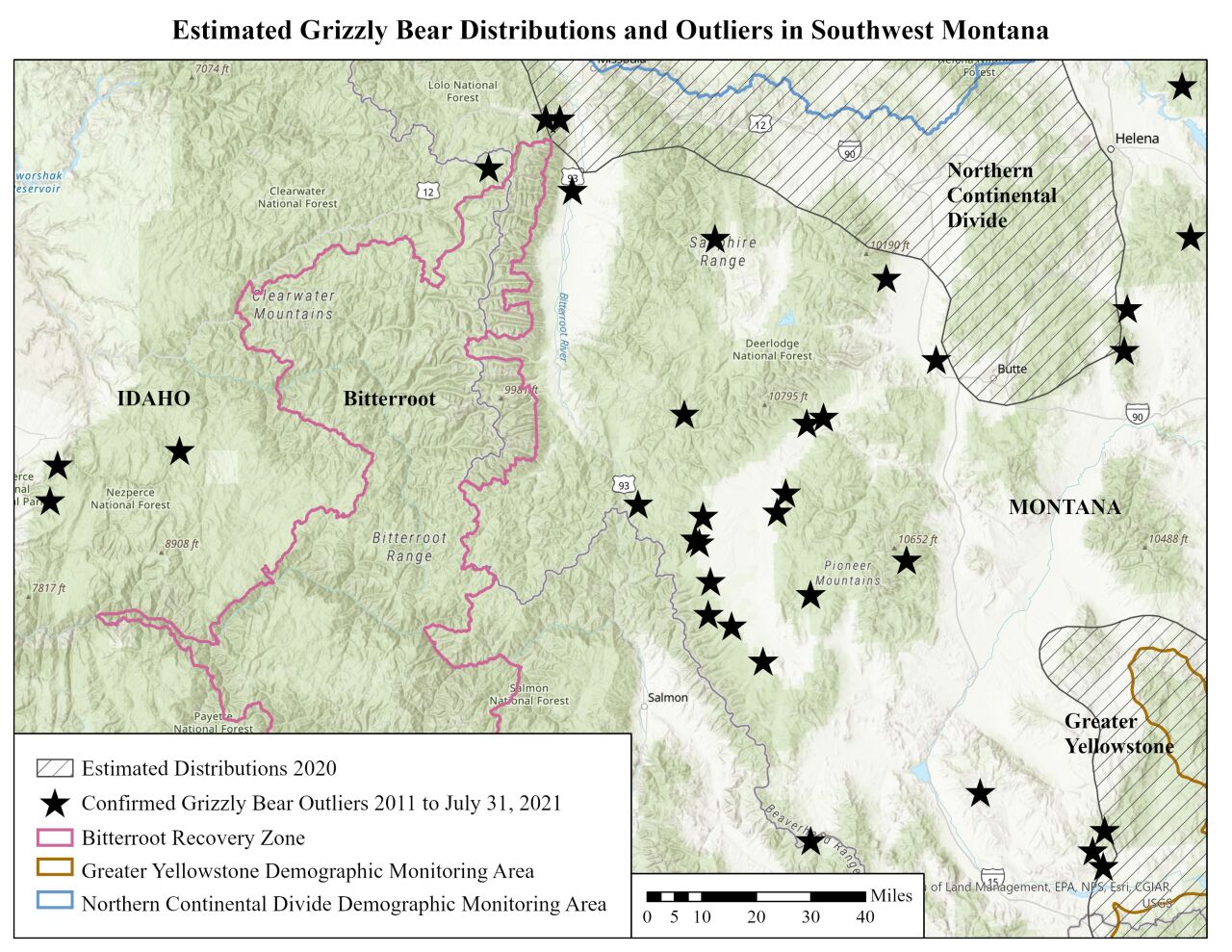MISSOULA — Wildlife officials have confirmed four grizzly bears in the Upper Clark Fork and Bitterroot Valleys this year, ranging from Gold Creek to Sula.
State wildlife officials note that while grizzly bears don’t inhabit the Deer Lodge, Flint Creek and Bitterroot valleys in as large of numbers as they do in some other parts of western Montana, activity has steadily increased over the past 10 years.
Montana Fish, Wildlife and Parks (FWP) reports that in the Flint Creek Range, east of Philipsburg, residents submitted photos in May that later led to the confirmation of two grizzly bears. Public reports like these often provide important clues for biologists.

Later in the summer, another trail camera that is part of a research study captured photos of two grizzly bears near the headwaters of Rock Creek, southwest of Philipsburg, according to FWP.
Details of one of the photographed bear’s movements were also tracked on a radio collar with the data showing the bear left the Seeley Lake area this spring, crossed Interstate 90, moved through the Flint and Rock Creek areas, and then traveled as far south as Sula.

The grizzly bears were confirmed in areas between established populations of grizzly bears in the Greater Yellowstone Ecosystem to the southeast and the Northern Continental Divide to the northwest.
“We’ve had enough confirmed grizzly bears to remind us to expect grizzlies anywhere in western half of Montana and not just in those spots where we tend to think of them being more common." - FWP western Montana bear specialist Jamie Jonkel
Riparian areas in the Upper Clark Fork draw bears looking for berries and other food sources and sometimes grizzlies will cross I-90 and head south in their quest for food, according to FWP.
FWP provides the following tips to stay safe in bear country:
- Be aware of your surroundings and look for bear sign.
- Read signs at trailheads and stay on trails. Be especially careful around creeks and in areas with dense brush.
- Carry bear spray. Know how to use it and be prepared to deploy it immediately.
- Travel in groups whenever possible and make casual noise, which can help alert bears to your presence.
- Stay away from animal carcasses, which often attract bears.
- Follow food storage orders from the applicable land management agency.
- If you encounter a bear, never approach it. Leave the area when it is safe to do so.
State wildlife officials note that keeping bear attractants secure, out of a bear’s reach, is especially important. FWP advises that when out, keep clean camps, store food and any other scented attractants securely away from sleeping areas and follow all food storage regulations.

Additionally, people should keep garbage indoors until the day of collection; remove bird feeders when bears are out and active; consider using electric fencing around chickens, garden areas and compost piles; and move other attractants such as pet food, dirty barbecue grills and ripe fruit indoors or into a secure building.
Click here to learn more about bears in Montana.




